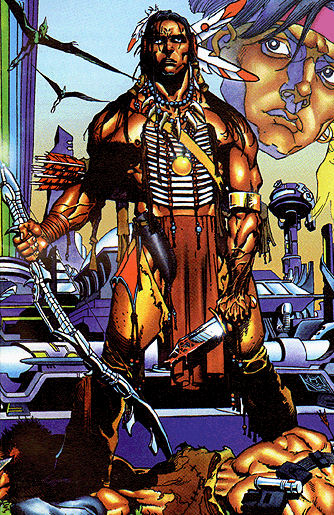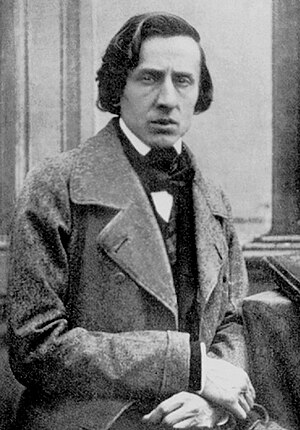Half-Life. It is considered, almost unanimously by veteran gamers, to be the greatest first person shooter ever made. After six years of doing almost nothing but growing and nurturing a thriving community of modders, map makers, multiplayer freaks and story tellers, Half-Life’s developer, Valve Software, finally released Half-Life 2. A year after its PC debut, the game appeared on the X-Box, and due to a severe lack of marketing, flopped. Valve is looking for a second attempt at dominating the console market, as they have the PC, with The Orange Box, a compilation of five games using Half-Life 2’s Source engine.
The Orange Box is many things, but most of all, it is a re-release of Half-Life 2. This may have been a bad move, as the original title was developed with mid to low end PCs in mind. So essentially, it is a three year old game, and while it didn’t hurt to look at in its time, it doesn’t look much better on the 360. It definitely doesn’t stand shoulder to shoulder with current generation games, like Bioshock, Oblivion, Resistance: Fall of Man or Halo 3. I’d even go as far as to say it looks only slightly better than Metroid Prime 3, which was recently released for the Wii, a system that has the minimalist in mind when it comes to hardware.
Still, games aren’t all shiny graphics, and I wish I could say that Half-Life 2 is still fun to play throughout, but there are a lot of level design choices that are really difficult to understand. It is one of those games where you’ll find yourself stuck in a boring room for five or ten minutes wondering what the Hell the designers want you to do, with little or no hints from the environment. It plays best in segments where you are constantly moving forward, plowing through enemies and intuitively following the shifting path ahead of you, but the slower puzzle solving parts of the game do a lot to put the breaks on the fun.
There are two very redeeming qualities about the game: Its story, and the character animation. Valve designed an excellent facial animation system that really hasn’t been outmatched. The skins on their models aren’t super realistic, but like a proper cartoon character, you don’t feel weird looking at them and you can easily tell how they feel at any given moment. Stare at the female lead character for too long, and she’ll shyly turn her chin away while looking at you through the top of her eyes – the only thing that would make the effect complete would be if she could blush. Characters in battle look worried or angry, character who are depressed look depressed, characters who are happy to see you look and act happy to see you. It’s a testament both to the voice actors, and the animators at Valve, at how alive these characters are. Equally impressive, this same range of emotions immediately turn to peace and neutrality whenever they are killed. The effect is limited, as there are maybe only six main characters who have their faces exposed – everyone else is a stock NPC, or are either hidden behind a military death mask, or underneath a headcrab.

The story is fun to watch unfold, but that’s all you do, watch. The game’s main character, Gordon Freeman, is the most uninteresting blank slate to headline a blockbuster this side of David Morse. The fact that your character adds nothing to the game beyond progressing from level to level hurts the entire narrative, especially as you watch the relationships between father and daughter, scientific colleagues and oppressed civilians banding emotionally together to get through each day. Alyx Vance, who is the game’s real hero, escorts Gordon through some significant portions of the game, and while she flirts with Gordon and praises his achievements as the game goes on, the silence in his replies is deafening.

Fortunately, The Orange Box comes with a lot more than just Half-Life 2. Two episodes of the extended single player campaign are included, and follow the events after the main game’s climax. Both episodes are significant improvements over the core gameplay of the original game, and the flow and pacing is a lot smoother. There were many fewer hiccups in the level design, and you almost always know what you’re supposed to do in any given situation. The episodes are also best representative of the now four years old physics engine that Valve created in house, including one puzzle where you must literally detonate a hinged garage floor underneath you to get launched onto an otherwise unreachable ledge. That type of innovation in puzzle design is what made Half-Life 2 more than just another shooter, and for all the poorer parts of the game that require clairvoyance or a strategy guide, there are many more challenging and genius, but not frustrating, parts in Episodes 1 and 2.
Episodes 1 and 2 have the same story problems as Half-Life 2, as Gordon still hasn’t decided to say anything yet. But the good parts are even better in the expansions – the time between the release of the original game and the additional content has probably allowed Valve to absorb some criticism. I’m glad to see that they’re improving an already excellent franchise based on fan feedback.
And yet there’s more. Team Fortress 2 is the most in depth multiplayer shooter ever made. The tone of the game speaks best through the advertisements for its class systems. It looks beautiful, there is a minimal amount lag in the 360 version and almost none in the PC, and its fun to play. What more do you need? It’s a simple game, and people will be playing it for many, many years. The original Team Fortress, which was created using the original Half-Life engine, is one of the most prolific online games ever made. TF2 seems like it will definitely follow suit.

The crown jewel of the Orange Box is also its smallest. Portal, a hilarious and brilliant puzzle game involving tears in physical space, made me happy. Again, this is a game that uses the Half-Life 2 engine, and has a silent protagonist just like Gordon, but an entirely different tone. Half-Life 2 is a survival horror shooter where you have to lead an uprising against faceless dictators while trying to keep the human race from being turned into the undead hosts of parasites, Portal is a giant lab rat maze wherein an insane A.I. tries to coax you into doing things for cake. The events of Portal take place in the same universe as Half-Life, as is alluded to in the second episode. It fits, but in a very strange way – it’s like watching Alf walk across the bridge of Kirk’s Enterprise, gulp down a tribble, and not being phased by it.

All of the games also come with commentary tracks that you can listen to while you’re playing, and these allow you to hear the thought process of the games’ makers around key areas while you’re actually exploring them. It’s really cool – it’s like walking around inside a Alfred Hitchcock movie while he’s telling his philosophies on character development and set design. The audio quality for these is… eh, subpar at best, so sometimes it’s hard to hear what they’re saying, but when you can, they’re usually saying something really fascinating, and they provide a lot of great insight into the industry in general, and specifically how deep their work really is.
Having been around for so long, Half-Life 2 alone would not be worth anyone’s hard earned money for sixty bucks. With the huge amount of content that comes with The Orange Box, it’s actually a great value, especially if you haven’t played Half-Life 2 since it first came out.


























